Global voice infrastructure silently powers almost every customer interaction. Yet only a few procurement teams realize how fragile or fragmented that infrastructure becomes without the right Direct Inward Dialing (DID) provider behind it.
In 2023, enterprises reported $4.4 million in average annual losses tied to telecom downtime, fraud, and compliance failures — all linked directly to core voice systems like DID routing, porting delays, or identity verification failures.
For mid-size to large enterprises managing high-volume inbound traffic, global SaaS firms with distributed support operations, or VoIP buyers with regulatory exposure across borders, choosing a DID provider isn’t about price or number coverage alone. It’s a decision that affects latency-sensitive transactions, call authentication, data privacy, and operational continuity.
This isn’t a generic overview. You won’t find recycled checklists or vague references to “call quality” here. Instead, this guide offers a tactical breakdown of what actually matters when evaluating DID providers — from real-world interconnect reliability to fraud exposure from recycled number pools. Whether you’re replacing an underperforming provider or architecting a global SIP strategy from scratch, the decisions outlined below will shape the stability, security, and scalability of your voice stack.
Key Takeaways
- DIDs are now critical infrastructure, powering not just inbound voice but also MFA, regulatory routing, fraud tracing, and emergency compliance, making provider selection a strategic decision.
- Top-tier providers offer real-time provisioning, deep API integration, clean number hygiene, and city-level inventory, not just “150+ countries” marketing fluff.
- Key evaluation factors include SIP path control, compliance readiness (e.g., KYC, STIR/SHAKEN), call quality metrics (ASR, PDD, jitter), and transparent SLAs with real support escalation paths.
- Hidden risks include recycled numbers (spam tags), porting lock-ins, non-compliant hosting in restricted markets, and poor API maturity, all of which can cripple deployments post-launch.
- Direct-to-carrier routes offer more control but require telecom expertise; aggregators offer speed and scale but often obscure routing and compliance layers.
The Modern Role of DID Providers in Global Communication Infrastructure
Direct Inward Dialing has evolved far beyond its origin as a simple gateway for inbound voice traffic. For enterprises operating across borders, DIDs now function as critical infrastructure — tightly woven into programmable communications, regulatory frameworks, and identity systems. Selecting a DID provider today means evaluating how deeply they integrate into your broader voice architecture, not just how many numbers they can assign.
DID as Infrastructure, Not Just Numbers
DIDs have become foundational components of enterprise-grade telecom systems. Rather than serving as static endpoints, they now connect into programmable APIs, automated number provisioning workflows, and global SIP environments.
Leading DID providers operate more like cloud infrastructure vendors than number resellers. They offer real-time number provisioning through APIs, webhook-triggered event handling, and seamless integration into CPaaS platforms. When DIDs are provisioned instantly into a hybrid PBX, or linked with STIR/SHAKEN attestation layers for call authentication, they cease to be just numbers — they become programmable telecom primitives.
These integrations are especially critical in architectures that support hybrid deployments: on-prem PBX systems routed through global SIP trunks, or cloud-based contact centers with intelligent routing logic. Without a provider that exposes this level of programmability and interop, voice infrastructure becomes brittle — prone to delays in number activation, errors in routing logic, or gaps in compliance.
DIDs also intersect with digital identity. When tied to verifiable credentials or decentralized identity stacks, they become part of the trust layer — useful not just for routing calls, but verifying who’s behind them. In emerging markets, this is increasingly relevant where phone numbers double as authentication tokens or identity anchors in digital ecosystems.
Use Cases Beyond Inbound Calling
While inbound voice is the baseline, the enterprise value of DIDs extends far beyond simple call receipt.
- Multi-Factor Authentication (MFA): Voice-based MFA is still used in sectors where SMS delivery is unreliable or where voice channels offer better compliance auditability. DIDs provisioned for this use must support instant scalability and clean reputation to avoid spam filtering or carrier blocks.
- Jurisdiction-Specific Routing: Organizations subject to regional privacy laws (e.g., HIPAA in the U.S., GDPR in Europe, LGPD in Brazil) use DIDs to enforce compliance-driven routing. Calls originating in a specific jurisdiction may need to be handled within local data boundaries — something only enforceable when DIDs are geographically anchored and properly registered.
- Fraud Detection and Traceback: In fraud prevention, DIDs can act as traceable IDs linked to specific workflows or customer segments. They enable security teams to isolate incidents, trace anomalous behavior, and segregate high-risk traffic. When combined with real-time analytics, this reduces exposure to robocalls or CLI spoofing.
- Regulatory Presence Without Incorporation: In markets where local presence is legally required for telecom operations, DIDs allow for regulatory presence without needing full incorporation. But that’s only viable when providers maintain direct relationships with in-country carriers and adhere to lawful intercept requirements.
- Emergency Services and Location Services: In some jurisdictions, regulations require DIDs to be locatable for emergency dispatch. That ties directly into infrastructure — not just routing — and highlights why resellers without direct infrastructure relationships often fall short.
DID infrastructure, when chosen well, quietly powers all of the above without friction. When chosen poorly, it becomes a single point of failure in systems where latency, trust, and legal accountability are non-negotiable.
The 5 Criteria That Actually Matter
Most provider comparisons still fixate on headline coverage and price-per-number. But enterprises scaling global voice infrastructure need to dig deeper. The difference between a stable, compliant network and one that collapses under load often comes down to a few critical, overlooked factors. Below are the five evaluation criteria that actually reveal whether a DID provider can support serious business needs, and the common distractions you should ignore entirely.
1. Geo-Coverage Transparency and Number Inventory Depth
A claim of “150+ countries covered” means nothing if you can’t provision numbers in the cities your teams actually operate in. Too many providers advertise country-level coverage without disclosing inventory gaps — particularly in LATAM, Sub-Saharan Africa, Southeast Asia, and emerging Gulf regions.
What matters is live number availability by city, not generic “in-country” presence. For example, a provider might list coverage in Brazil, but only offer numbers in São Paulo while you need Recife or Porto Alegre. Worse, some rely on third-party resellers whose inventory is inconsistent or restricted by local compliance terms.
Ask for a live inventory preview or API that lists city-level number availability in real time. Without it, scaling into new regions often means unpredictable lead times, regulatory delays, or last-minute sourcing workarounds.
2. Call Path Visibility and SIP Trunking Stability
Many DID providers are just aggregators — reselling numbers and routing paths without owning any part of the infrastructure. That introduces opacity. Calls can bounce across multiple upstream carriers, each adding jitter, delay, or unexpected termination behavior.
The best providers operate or directly control their last-mile SIP interconnects, ensuring voice traffic stays within a known, monitored path. This impacts both quality and predictability — critical for financial services, contact centers, or authentication flows where dropped or degraded calls aren’t acceptable.
To assess trunk stability, ask for these KPIs per country or region:
- Jitter: Should consistently stay below 30ms for real-time clarity
- Post-Dial Delay (PDD): Ideally under 2 seconds
- Answer-Seizure Ratio (ASR): Minimum threshold of 60%, region-adjusted
- Network Effectiveness Ratio (NER): Over 85% signals healthy call completion
Without visibility into how voice packets travel — and who controls the network at each hop — you’re essentially guessing whether calls will complete or degrade.
3. Regulatory Footprint and Identity Verification Stack
Telecom regulation is anything but uniform. What’s optional in one country is mandatory in another — from real-name registration in Germany, to KYC requirements in India, to lawful intercept readiness in the UAE.
DID providers must either handle local compliance obligations directly or partner with in-country operators who do. If they can’t articulate how they manage number identity, lawful intercept, and emergency addressability for each market, it’s a sign of weak regulatory posture.
Below is a simplified comparison of baseline regulatory expectations across key regions:
| Country | KYC Requirement | Lawful Intercept | STIR/SHAKEN Required | Emergency Address Registration |
| United States | Optional (varies by carrier) | Yes | Yes (VoIP & carriers) | Yes |
| Brazil | Mandatory (CPF/CNPJ) | Yes | No | Yes (local addresses only) |
| Germany | Mandatory (Proof of Address) | Yes | No | Yes |
On top of regional compliance, leading providers are aligning DIDs with decentralized identity systems. This includes support for verifiable credentials or DID documents tied to phone numbers — allowing them to be used not just for calls, but as part of secure authentication flows.
If a provider treats regulatory complexity as an afterthought, your compliance team will pay the price.
4. Integration Depth and API Maturity
Not all APIs are created equal. Some providers bolt on basic endpoints for provisioning or porting, but leave dev teams struggling with outdated documentation, missing webhooks, or manual workarounds for basic workflows.
The real value comes from telecom-grade API design — complete with:
- Webhook support for provisioning, status updates, fraud alerts
- Sandbox environments to test before committing
- Granular permission scopes and secure tokens for each integration
- Real-time number provisioning (no tickets, no delays)
- Detailed, versioned documentation that doesn’t rely on human support to decipher
Ask for real-time demo access to their API. If it takes longer than 5 minutes to provision a number and route a test call — walk away. The right provider should feel like a platform, not a helpdesk queue.
5. SLA Enforcement and Support Escalation Logic
“24/7 support” often means little more than an email inbox with no SLA. When evaluating providers, don’t just look for support promises — vet how they’re enforced.
Here’s what separates real escalation logic from marketing fluff:
- Named escalation paths: Who owns incident response at each tier?
- Timezone coverage clarity: Do they operate actual NOC teams around the clock, or only business-hour email support?
- Incident response testing: Ask if you can simulate a failed port or stuck number to test real-time escalation.
- SLA loopholes: Watch for language like “commercially reasonable efforts” or SLAs that only apply to paid plans above a threshold.
Pre-sales diligence should include sending test tickets or queries through different channels (chat, email, phone). Time how long it takes to get a technical resolution — not just an automated reply. If it fails during the sales phase, expect worse after signing.
Hidden Risks Most Buyers Miss (From Real Implementations)
DID procurement decisions often happen under pressure — an urgent expansion into a new region, a sudden compliance shift, or an underperforming legacy provider. That urgency leaves room for critical oversights. Below are the high-impact risks that don’t appear on feature lists or sales demos, but regularly surface once systems go live.
Hidden Fees and Lock-In Contracts
Most buyers fixate on per-minute rates or flat monthly fees, but the real costs tend to hide in the fine print.
Start with per-porting fees. While porting should be a baseline service, many providers charge per number — and even more if you’re moving across regions. Some also introduce tiered pricing that penalizes less common countries or cities, creating pricing surprises mid-rollout.
Another red flag: ownership restrictions. Some providers technically lease numbers to you but retain legal ownership, which can block you from porting them away later. Even if porting is allowed, it often comes with cooldown clauses — 60 to 90-day holds after termination, or early exit penalties tied to “minimum tenure” contracts.
Key questions to ask before signing:
- Are there port-out cooldown periods or transfer restrictions?
- Do I own the numbers outright, or are they leased from an upstream aggregator?
- Is pricing flat across all countries, or do rates vary by tier or zone?
- Are support or provisioning SLAs gated by minimum spend thresholds?
If any of these details are missing from the MSA or quietly buried in T&Cs, assume they’ll be used against you during contract renegotiation or migration.
Cross-Jurisdictional Compliance and Number Hosting
A number that works doesn’t always mean it’s legally compliant. Many countries enforce hosting requirements around number origin, lawful intercept, or data localization — and providers that bypass these rules put customers at risk.
For instance, regulators in Turkey, India, and the UAE require local hosting or registration for number provisioning. If a provider offers virtual numbers in those regions but routes them via European or North American data centers, you’re likely operating out of compliance — even if the call connects.
In regulated markets, DIDs can only be sold by providers with:
- Local carrier partnerships or licenses
- Jurisdiction-specific hosting infrastructure
- Registered presence (or certified intermediaries) for intercept compliance
To avoid risk exposure, ask directly:
– “Are these numbers hosted in-country, or terminated via third-party routes outside the jurisdiction?”
– “Do you comply with lawful intercept and KYC requirements for each of the regions you cover?”
If they dodge the question or can’t show documentation, you’re likely dealing with a gray-market workaround — and that can result in blocked traffic, fines, or revoked numbers with zero notice.
Fraud Exposure from Poor Number Hygiene
DID reputation matters — not just for outbound dialing but for how inbound traffic is handled by carriers and end devices. Poor number hygiene can result in call blocks, spam flags, or worse — association with previous fraud activity.
Low-cost providers often recycle numbers too aggressively. A number that was previously flagged for robocalls, phishing attempts, or identity scams might still be technically available — but completely unusable in practice. Once a number’s CLI is blacklisted or flagged in crowd-sourced spam databases, recovery is near impossible.
Symptoms of poor number hygiene include:
- Calls going straight to voicemail or disconnect tones
- Spam labels appearing on caller ID, even for legitimate traffic
- Low ASR on newly provisioned numbers
- Complaints from end users about previous number activity
To vet number quality, ask if your provider supports:
- HLR lookups to verify live status before provisioning
- Reputation scoring APIs to assess a number’s call history
- Minimum quarantine windows before number reuse
- Dedicated number pools with guaranteed clean history
Without those safeguards, every new number is a gamble — and in markets where brand trust matters, one bad CLI flag can tank campaign performance or customer response rates.
Tactical Evaluation Framework: A Buyer’s Checklist
At this point, you’ve seen how fast a DID provider can become a liability — whether through regulatory blind spots, unreliable interconnects, or support that collapses under stress. So how do you evaluate providers before you commit?
Use the checklist below to go beyond sales claims. These are the technical, operational, and legal checkpoints that separate scalable infrastructure from temporary workarounds. Every item should be confirmed in writing or through hands-on testing before signing a contract.
DID Provider Evaluation Checklist
Number Coverage & Availability
- Access to city-level number inventory, not just country-level claims
- Live inventory API or sample list available pre-contract
- Clear distinction between owned vs. brokered number pools
- Number availability across LATAM, APAC, and Africa, not just US/EU
Network Performance Transparency
- Region-specific data for ASR, NER, jitter, and PDD
- Clear routing paths (no blind multi-hop upstreams)
- Real-time monitoring dashboards or access to QoS reports
- Commitments for SIP trunk redundancy and last-mile control
Compliance Readiness
- Region-specific compliance disclosures for KYC, STIR/SHAKEN, GDPR, HIPAA
- Ability to host DIDs in-country where legally required
- Documentation of lawful intercept capabilities (where applicable)
- Number provisioning aligned with local identity regulations
API and Integration Flexibility
- Full-featured API with real-time provisioning, porting, and audit logs
- Availability of a sandbox/testing environment before going live
- Webhook support for status changes, fraud alerts, provisioning events
- Well-documented, versioned API with no reliance on manual support
Porting Policy and Number Ownership
- Clear SLAs for number port-in and port-out timelines
- No ownership restrictions or hidden “cooldown” clauses
- Written confirmation of number portability rights
- Support for bulk porting and jurisdiction-specific porting protocols
Support, SLAs, and Escalation
- SLA document includes uptime commitments, resolution windows, and penalties
- 24/7 support across time zones, including named escalation contacts
- Response time testing allowed pre-contract (via dummy support tickets)
- No SLA loopholes (e.g., vague “best effort” language or tier restrictions)
Trial Access and Testing
- Ability to provision test numbers before committing
- Real traffic simulation allowed for porting, routing, and QoS tests
- No prepayment required for low-volume trial access
- Transparency into how test numbers differ (or don’t) from production inventory
When to Go Direct vs. Through a Reseller or Aggregator
Pros and Cons of Each Route
Enterprises sourcing global DIDs typically choose between two routes: direct relationships with licensed providers or aggregators who broker access across regions. Both approaches come with trade-offs — but failing to understand those trade-offs early creates operational blind spots.
Direct-to-carrier relationships offer the most control. You get deeper technical access, faster provisioning, and often cleaner number inventory — because there are fewer intermediary hops and less infrastructure abstraction. They’re also essential for jurisdictions where compliance or lawful intercept requirements prohibit resale.
However, going direct introduces overhead. You’ll likely need internal telecom expertise to manage multiple provider contracts, maintain separate integrations, and navigate porting rules for each country. This route is better suited for teams that treat telecom as core infrastructure, not just a commodity.
Aggregators, on the other hand, provide faster rollout across multiple countries via a single contract and API. They abstract away the complexity of carrier-by-carrier differences. This works well for startups or lean teams who need reach without managing dozens of compliance frameworks or technical endpoints.
But aggregation comes with tradeoffs:
- You lose visibility into call paths
- You often get generic SLAs and shared number pools
- You’re rarely informed when underlying carrier relationships change — until it affects uptime or compliance
Choose aggregators for breadth and speed. Choose direct providers when control, traceability, and performance are non-negotiable.
Beyond Price: What “Total Cost” Really Means for DID
Long-Term Costs of a Poor Choice
The cheapest provider on paper often turns out to be the most expensive one in practice. Beyond per-minute or per-number pricing, the real cost of a DID provider emerges through operational fragility — where small failures multiply across systems and teams.
Examples of cost leakages include:
- Call routing failures that block critical voice flows or cause session timeouts — especially damaging for time-sensitive apps like banking or MFA. Industry-wide, average cost of telecom downtime for enterprises in 2023 was $500–$700 per hour/
- Failed or delayed porting, which can stall market entries, break user onboarding flows, or trigger number reassignment issues. In high-churn environments like retail or logistics, delays of even 72 hours can result in missed customer SLAs and attrition.
- Integration rework due to shallow or unstable APIs. If your platform team spends weeks reverse-engineering undocumented workflows or building redundant error handling, the cost quickly eclipses any monthly savings.
- Regulatory penalties from non-compliance in data localization or identity verification. In Brazil, for instance, violating LGPD can trigger fines up to 2% of annual revenue, capped at 50 million BRL per incident.
- Brand damage from blacklisted or recycled numbers. Once a number is tagged as spam, customer trust erodes — especially in finance, healthcare, and government sectors.
Summary: What the Best DID Providers Have in Common
After evaluating every layer — from infrastructure to compliance to real-world implementation — a pattern emerges. The best DID providers share a common profile:
- Extensive, city-level number availability across regulated and emerging markets
- Direct control over SIP interconnects and transparent call path monitoring
- Regulatory readiness for KYC, STIR/SHAKEN, lawful intercept, and jurisdiction-specific hosting
- Developer-first APIs, with real-time provisioning, webhooks, and sandbox support
- Strict number hygiene practices, including reputation screening and CLI freshness
- Enforceable SLAs backed by 24/7 support and named escalation contacts
- Trial access that mirrors production performance — not staged demos
If your current provider fails on more than one of those fronts, it’s not just a vendor mismatch — it’s a structural risk to your voice infrastructure. It’s time to rethink.
FAQs: What Decision-Makers Still Ask
What’s the difference between DID and SIP?
DIDs are individual phone numbers assigned for inbound calls, while SIP is the protocol used to transmit voice and media over IP networks.
You route DIDs through SIP trunks to connect them to VoIP systems, PBXs, or contact centers — but they serve different roles in the voice stack.
How do I check a DID’s reputation?
Run HLR lookups, check for spam flags in third-party reputation databases, and test CLI delivery through various carrier routes.
Some providers offer reputation APIs or guarantee fresh, unused numbers — if they don’t, request a number quarantine policy or usage history.
Can I migrate numbers from a low-quality provider?
Yes, but only if you legally own the numbers and the provider doesn’t restrict port-outs.
Always review the porting clauses in the MSA. Some providers impose cooldown periods or require extended notice — even if the number was originally provisioned through a local carrier.
How do DID providers handle caller ID spoofing or robocalls?
Leading providers implement STIR/SHAKEN attestation for outbound calls and monitor CLI behavior to detect abuse.
If spoofing or robocalls are affecting your inbound numbers, ask your provider how they screen recycled numbers and whether they support complaint feedback loops.
Do I need different providers for SMS and Voice?
Not always — but many voice-first DID providers don’t offer full SMS capabilities or deliverability guarantees.
If SMS delivery matters, confirm whether the number is SMS-enabled, whether P2P and A2P routes are supported, and whether delivery receipts are exposed via API.
Further Reading










